A series of experimental programs and projects initiated during the President Franklin Roosevelt’s era in the 1930’s, also known as the New deal, was developed to help the country recover from the great depression. The initiatives offered economic and social programs that assisted many individuals have a greater claim on full American citizenship for the first time.
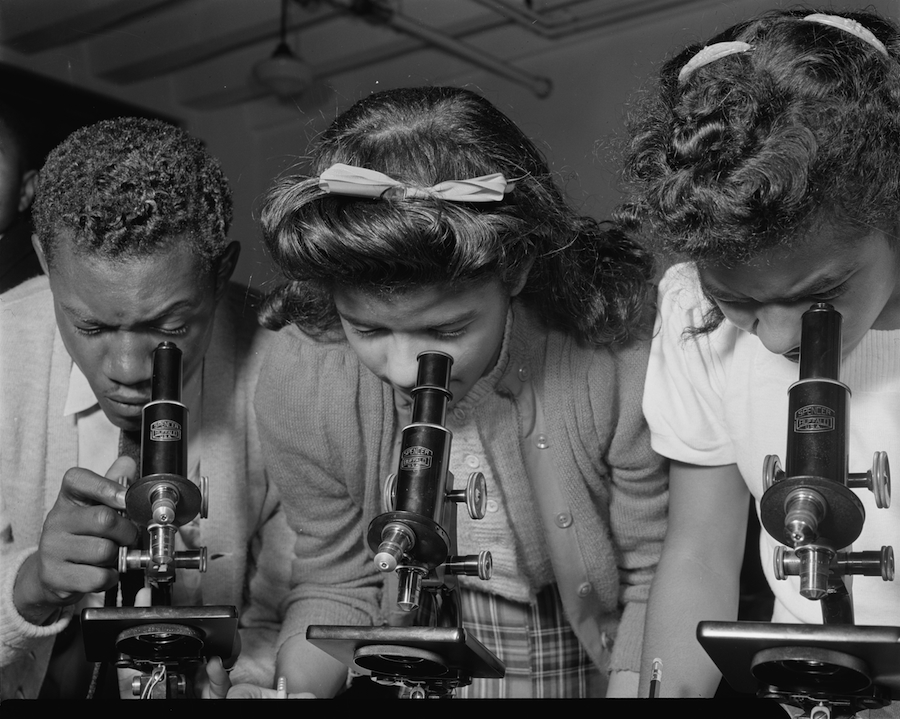
Daytona Beach, Fla., February 1943, students using microscopes at Bethune-Cookman College
The exhibition, “Claiming Citizenship: African Americans and New Deal Photography,” now at New York’s Schomburg Center for Research in Black Culture, shows African-Americans taking advantage of opportunities that hadn’t been available to them previously. “You can see how during the New Deal the government was experimenting with the possibility that all citizens deserved education, deserved medical care, deserved food security,” said exhibition curator Rickie Solinger.
The photos are drawn from the Library of Congress and the National Archives. Solinger said the Library of Congress photographs were taken by experienced photographers and tended to document the ravages of the Great Depression in order to build support for New Deal spending. The photos from the National Archives, she said, were taken mostly by anonymous photographers commissioned to show what that money was accomplishing.
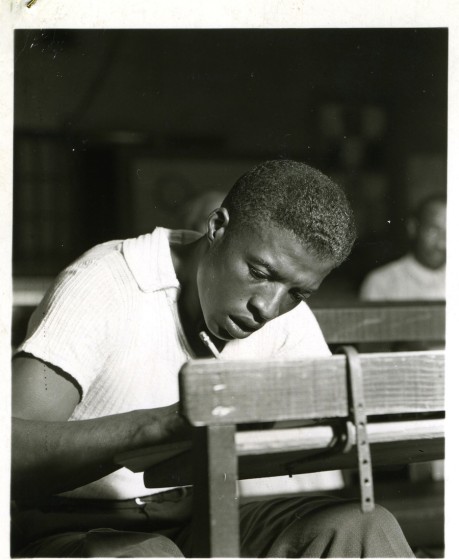
New Orleans, La., September 1936, beginner’s class in adult education
Beginner class in adult education, New Orleans, September 1936
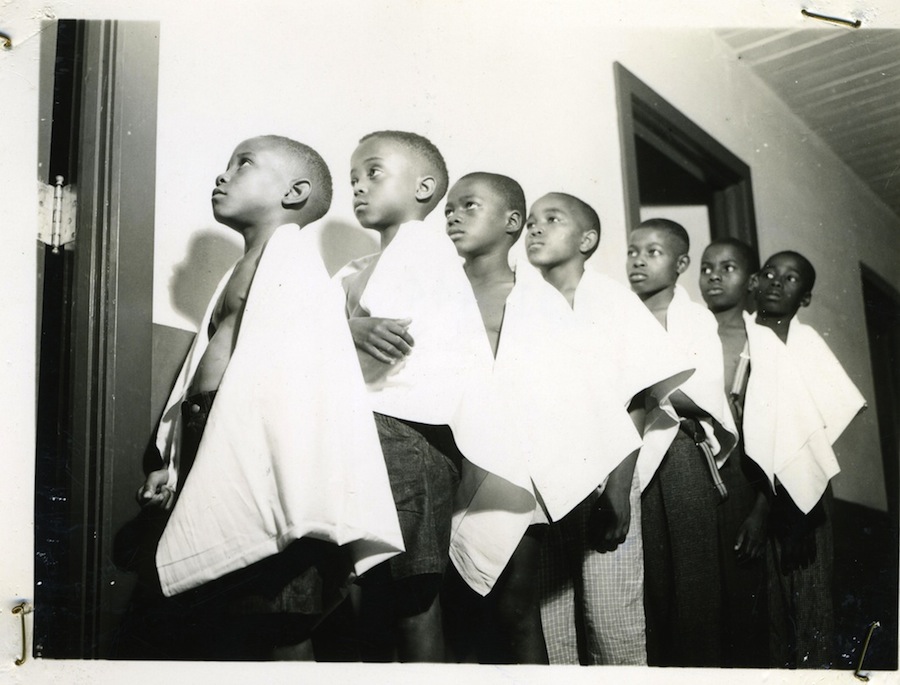
Birmingham, Ala., June 1938, boys wait their turn in line for examination at the Slossfield Health Center, constructed by the Works Progress Administration
Boys wait their turn in line for examination at the Works Progress Administration–constructed Slossfield Health Center, Birmingham, Ala., June 1938

South Bend, Ind., WPA Negro Recreation Trio (regular WSBT and WFAM broadcasts)
WPA Negro Recreation Trio (regular WSBT and WFAM broadcasts), South Bend, Ind.
The programs were wide-ranging, addressing issues including literacy, employment, and health. The Works Progress Administration, the most famous of these programs, put millions of Americans to work, including many African-Americans. It also exposed African-Americans to federally funded art, theater, music, and writing programs.
For some African-Americans, these were gateways to achieving some of the most basic elements of citizenship, which had been illusive due to systemic racism and poverty. “If you’re living in a moment in the 1930s in which you’re able for the first time to claim medical care or to be an adult and learn how to read … or to buy land and live in decent housing for the first time, these are arguably the constituent arguments for citizenship,” Solinger said.
For the way it empowered African-Americans, Solinger said that the New Deal era might be seen as a rehearsal for the civil rights movement. “When you think chronologically, the children in these pictures could grow up to be the parents of the civil rights activists of the ’60s, or the children could be participants in the civil rights movements themselves,” Solinger said.
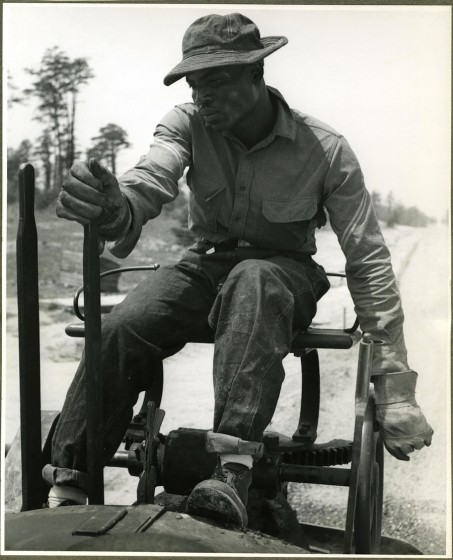
Controlling a road surfacing roller, Beltsville, Md., May 1940
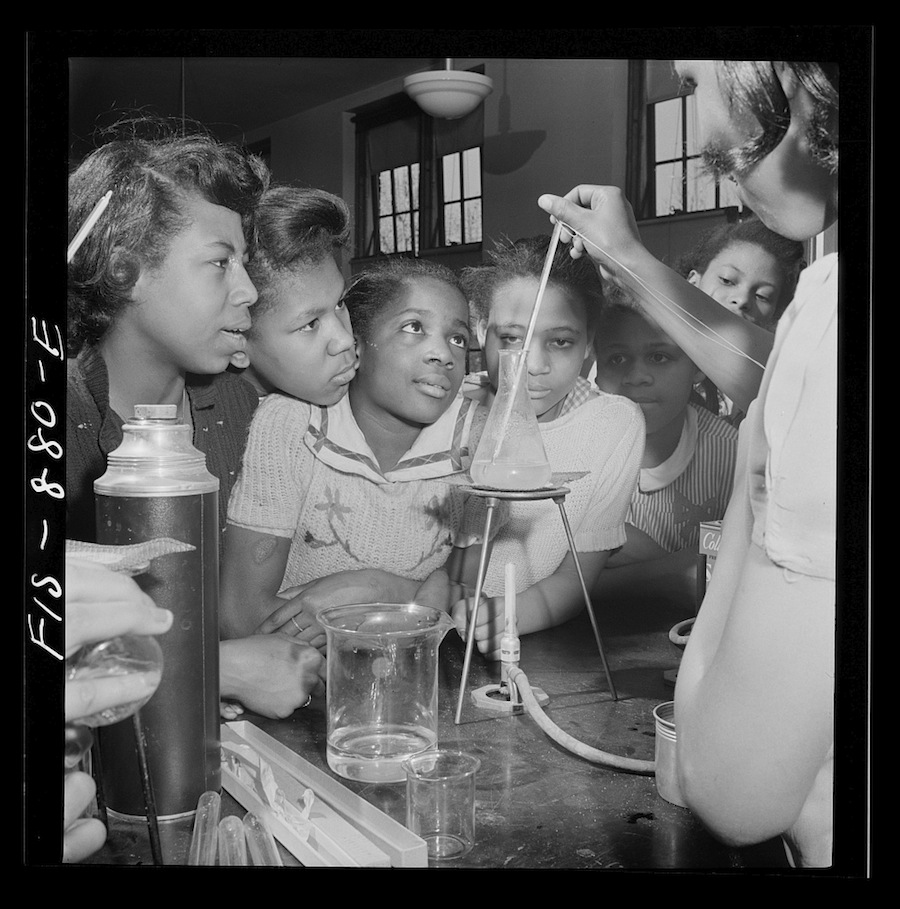
Washington, D.C., March 1942, science class in a black high school
But in the 1930s, the government had a long way to go before it would begin offering equal rights to all citizens. The New Deal, though a step forward for African-Americans, did little to address institutional inequality. “If you look at those pictures, you almost never see settings that were integrated in any way. Work settings, health care settings, and educational settings were always segregated, and the New Deal programs did not challenge that,” Solinger said.
“Claiming Citizenship” is on display at the Schomburg Center until Jan. 4.
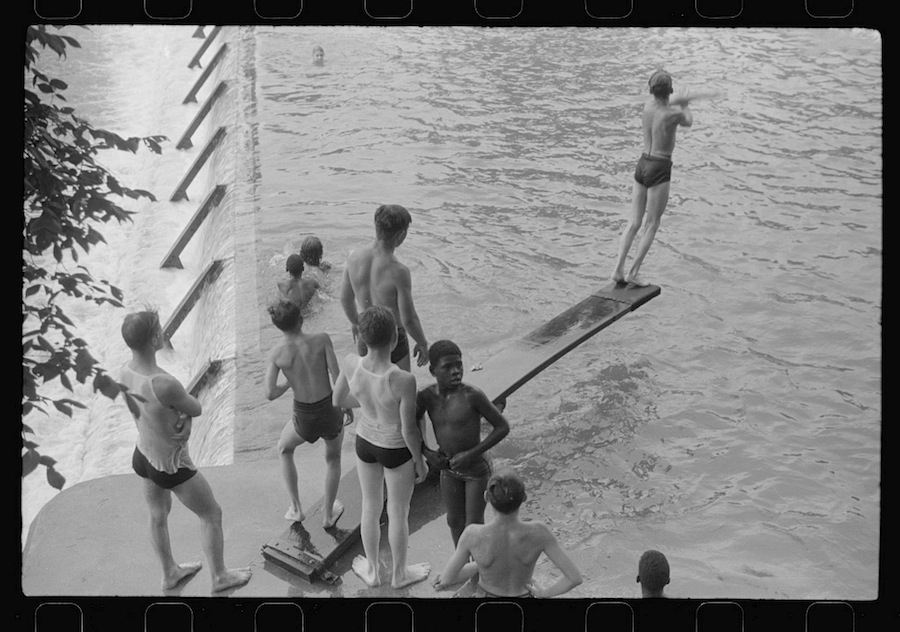
Swimming at a pool created by a Civilian Conservation Corps dam project, Huntingdon, Pa., 1941
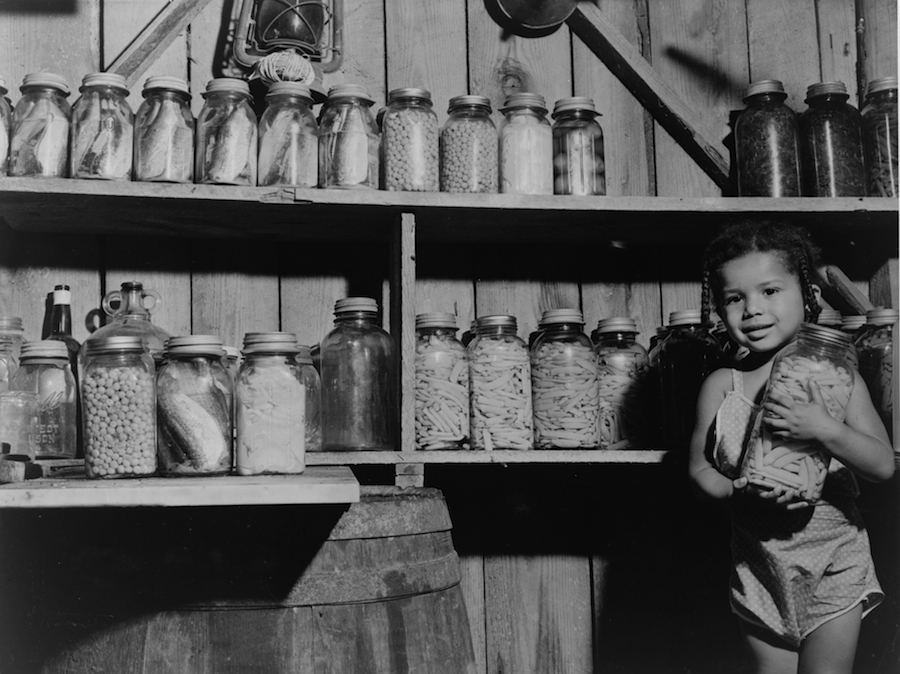
Dolores Harris, daughter of Farm Security Administration client George Harris, with canned food prepared by her mother, Dameron, Md., August 1940
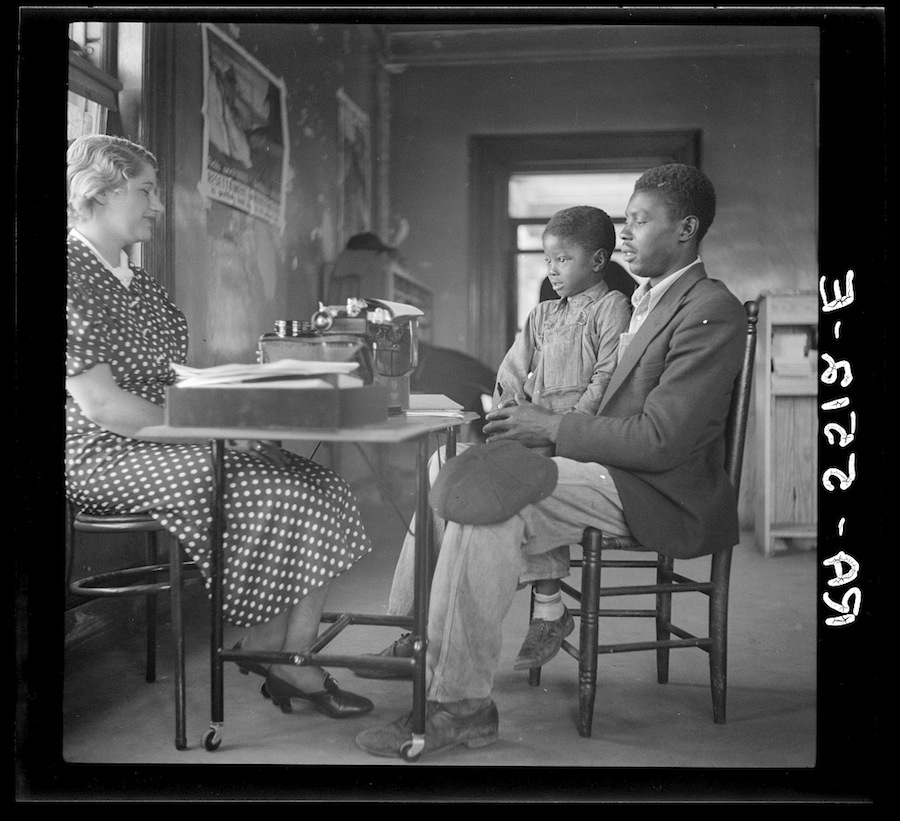
A rehabilitation client with his son repays a government loan, Smithfield, N.C., October 1936
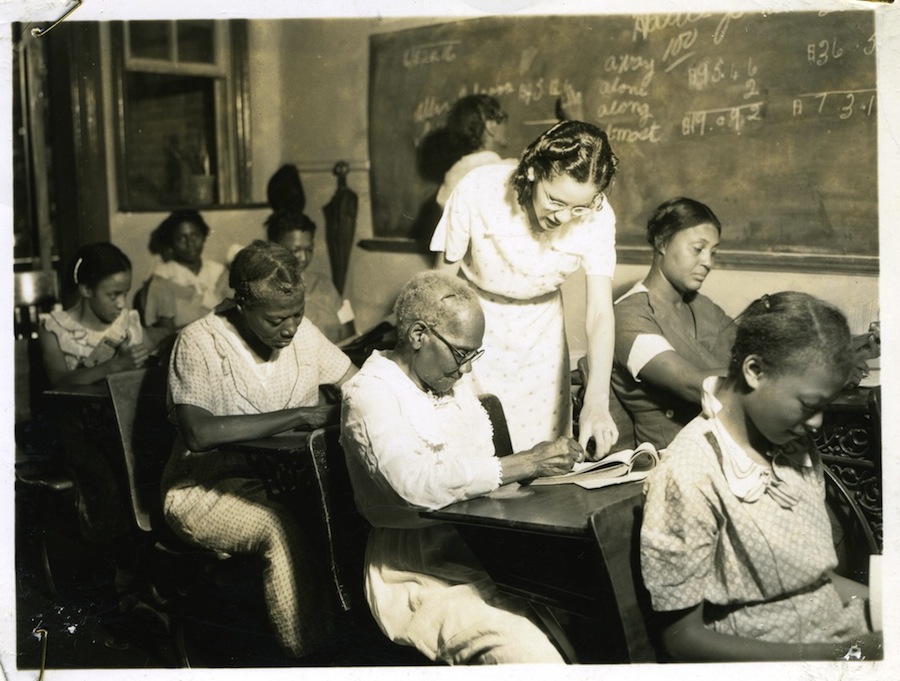
A WPA literacy teacher instructs 87-year-old Julia Wilson, Birmingham, Ala., June 1938
Read more: http://www.slate.com/blogs/behold/2013/09/27/the_schomburg_center_s_exhibition_claiming_citizenship_shows_how_african.html


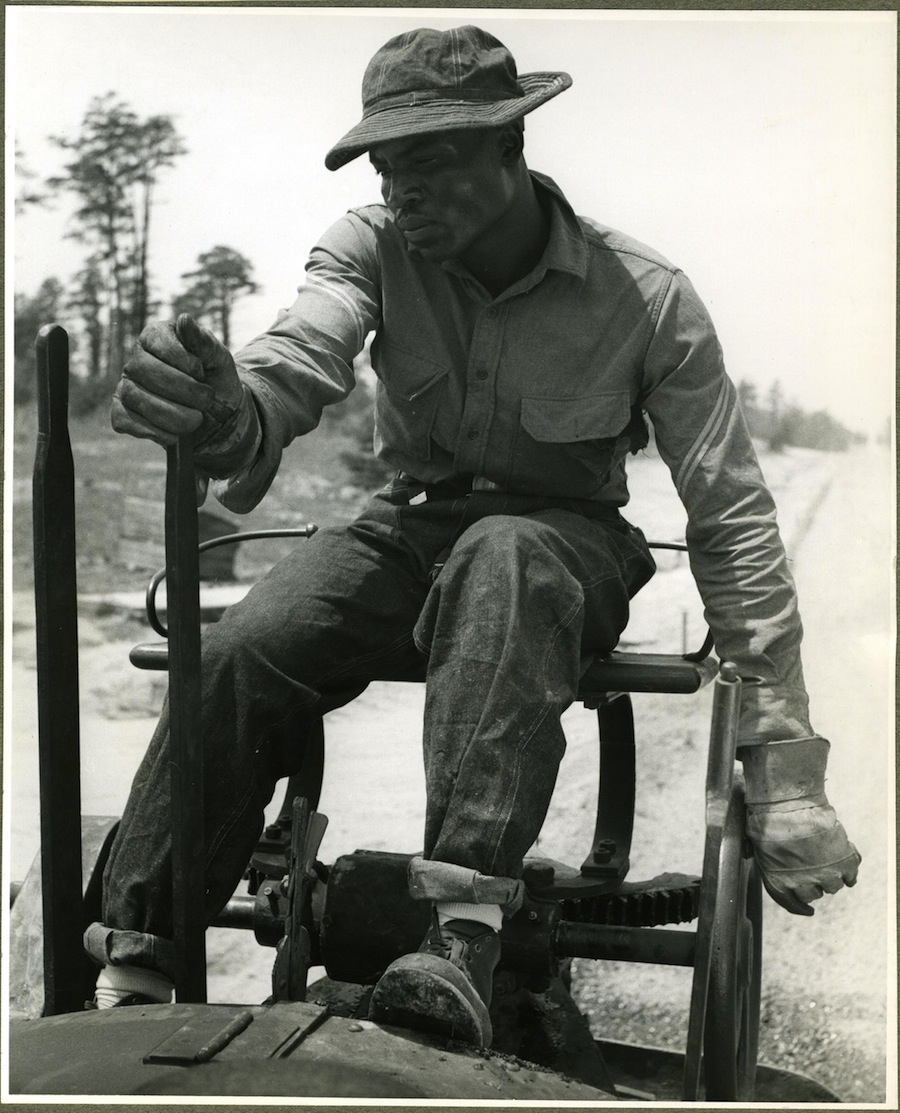
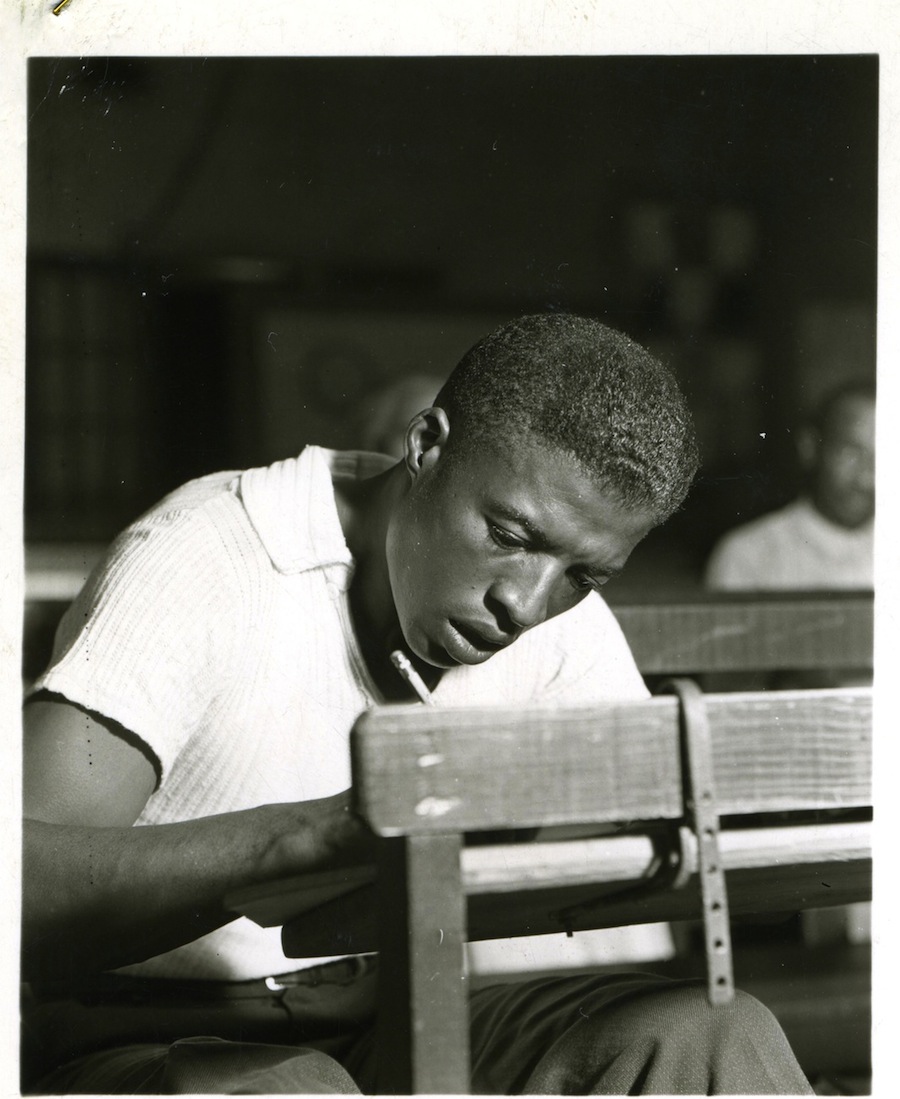




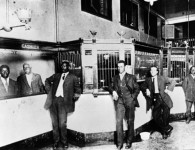
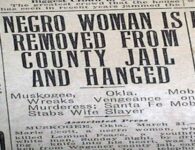





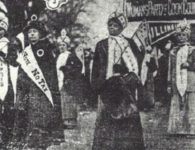




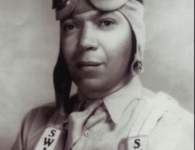

2 Comments
I have learned quite a few important things as a result of your post. I will also like to express that there will be a situation where you will apply for a loan and don’t need a co-signer such as a Government Student Aid Loan. In case you are getting a loan through a conventional loan company then you need to be prepared to have a co-signer ready to help you. The lenders may base any decision on the few aspects but the largest will be your credit ratings. There are some loan companies that will in addition look at your job history and make up your mind based on this but in many cases it will be based on on your score.
I noticed that you made a point of noting, that these programs were segregated. Why do we think that it is important to have a white face in the class? I just don’t get it. Maybe, it is because I SUPPORT a self help philosophy.